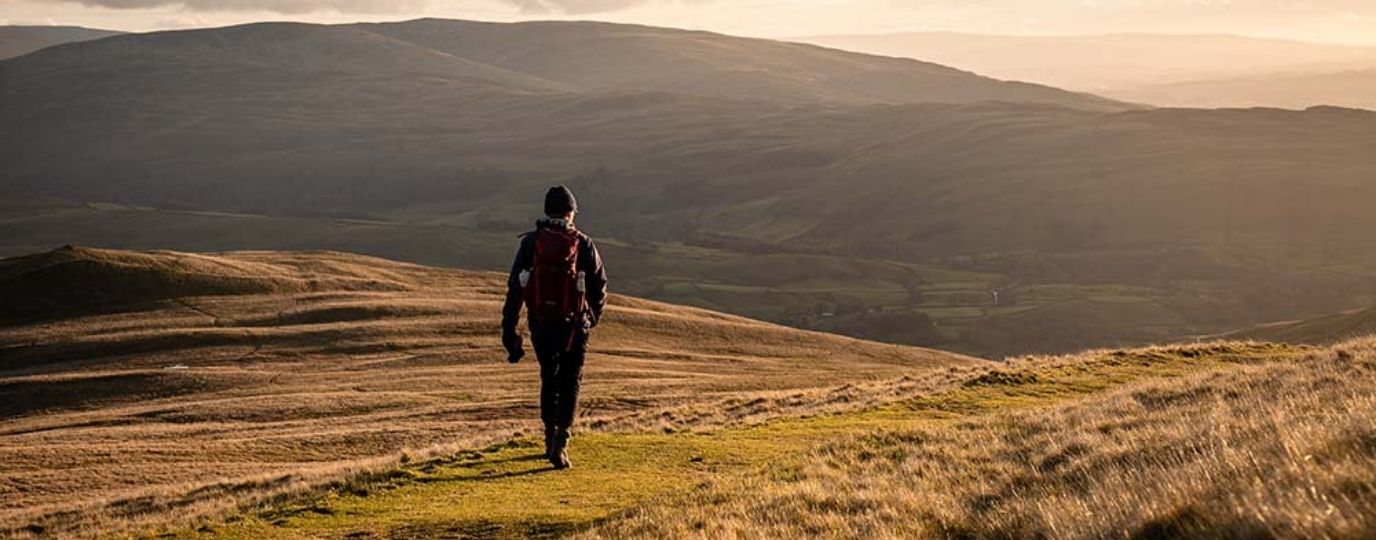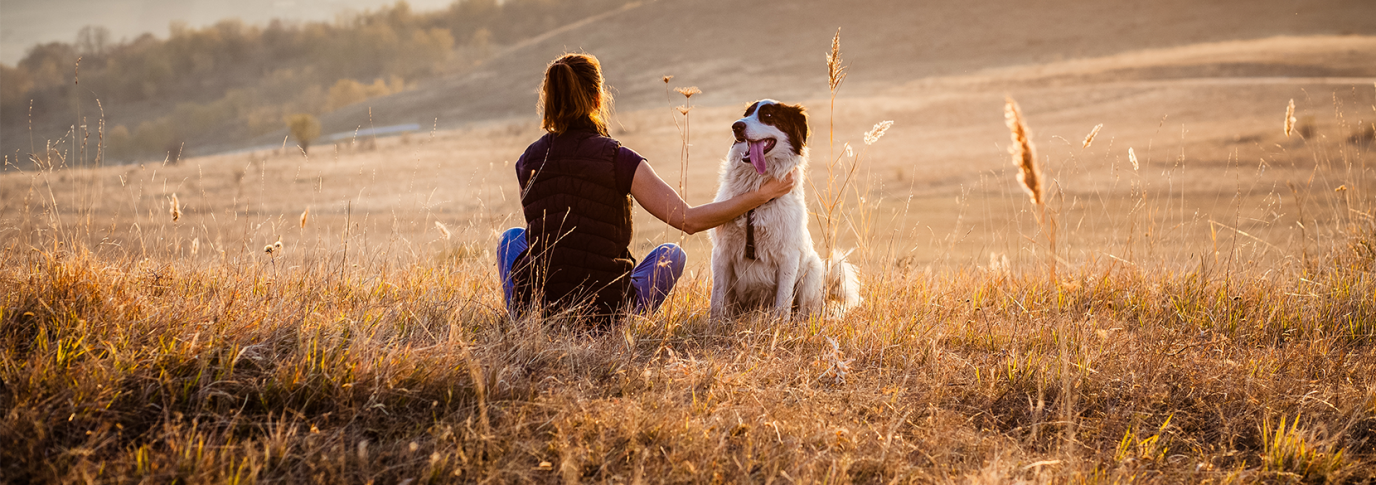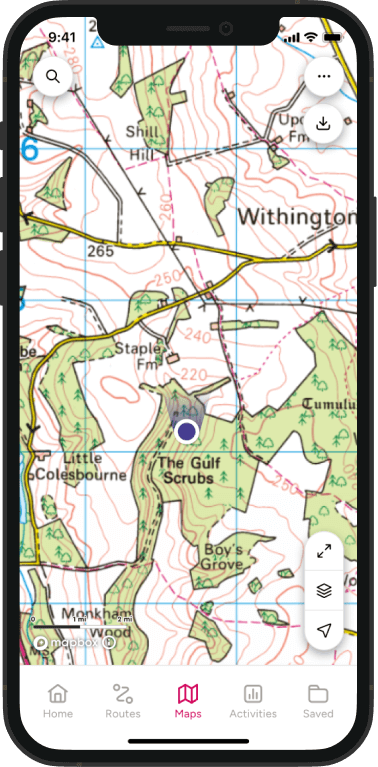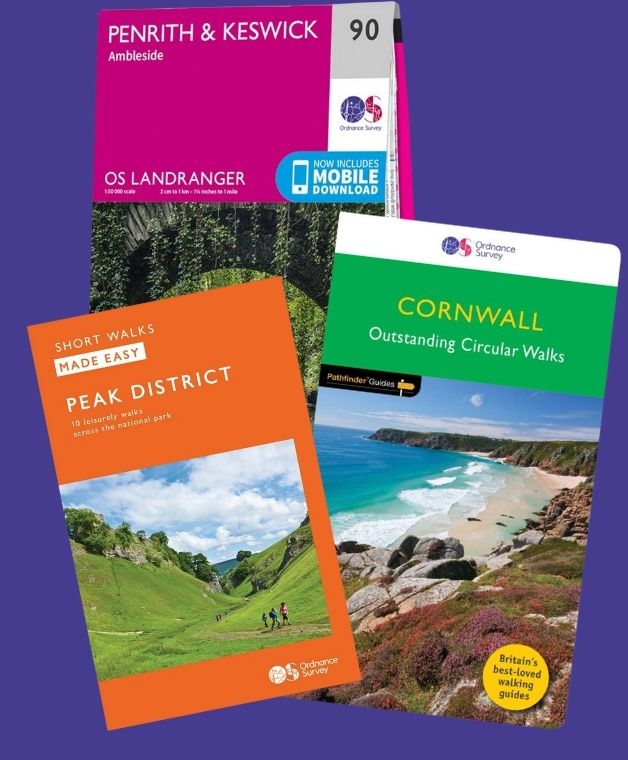Top 10 Injury Prevention Tips for Novice Hikers
In this blog, we’ll explore the top 10 ways to reduce your risk of injury when hiking, so you can enjoy more of what you love without pain or discomfort.
We’ll cover key principles and dive into the details of practical strategies for staying injury-free.
1. Build Things Up Slowly
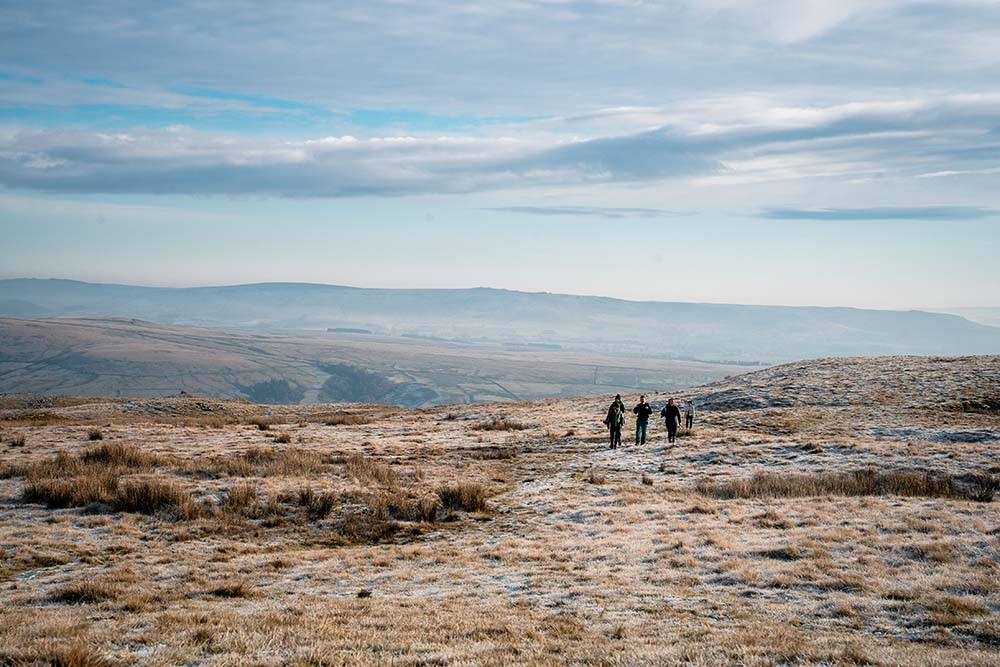
Most injuries occur when we do too much, too fast, or too soon.
In physiotherapy, we often use the term ‘graded exposure,’ which means gradually allowing your body to adapt to increasing levels of physical stress, otherwise known as ‘load’ (1).
Load is characterised as an external stimulus applied to the body. Key factors contributing to this load include:
- Distance: How far you’re traveling.
- Elevation/gradient: The steepness or hilliness of the activity.
- Speed/intensity: Measured as pace (minutes per mile/km) or effort (e.g., how long it takes to complete a mile).
- Terrain: Is it rocky, uneven, or flat? Are you dealing with mud, sand, or firm trails?
- Footwear: Are you using highly cushioned shoes or minimalist ones? Do your shoes provide enough grip, flexibility, and support?
If the physical load exceeds your body’s capacity to handle it, injuries are likely to occur. To prevent this, adjust one variable at a time. For example, focus on increasing your distance gradually before tackling more technical terrain or higher speeds. This approach helps your body adapt, strengthening it for your next adventure.
It is also important to say that your body’s capacity is also affected by other factors such as sleep quality, diet, smoking status and your mood / mental wellbeing. Therefore, taking into account these factors is also vital to reduce the risk of injury, as they all impact how well your body can handle the load.
2. Incorporate Resistance Training into Your Routine
Adding strength training to your weekly routine can significantly reduce your risk of injury. Research shows it’s effective for both acute injuries and overuse injuries.
Resistance training not only enhances physical strength but also improves fitness and resilience. Studies indicate it can reduce sports-related injuries by an average of 66% (2). It also helps speed up recovery from injury and reduces pain intensity.
This is especially vital as we age. Muscle mass naturally declines by 3–8% per decade after age 30, and this rate nearly doubles after age 60 (3). Strength training mitigates this loss, promoting long-term mobility and independence.
Strength training also brings other health benefits, including reduced osteoporosis risk, fewer falls and fractures, and improved bone density (4).
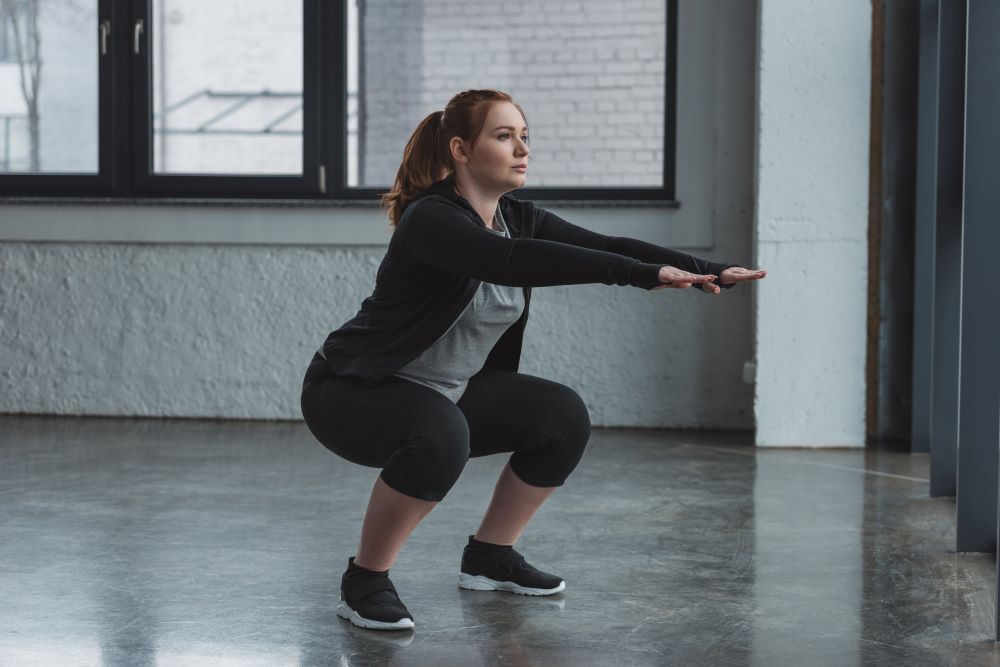
Not sure where to start? Beginners can achieve significant benefits by strength training just once a week for 12 weeks (5). Focus on exercises using multiple joints, such as squats or overhead presses, aiming for 3 sets of 12–15 reps, with the final rep reaching muscle fatigue.
Start small and build up over time. Stay tuned for strength training videos coming in the new year!
3. To Stretch or Not to Stretch?
There’s no definitive answer on whether stretching prevents injuries. While strength training is more researched and proven for injury prevention, stretching may help reduce soreness and stiffness post-exercise.
A recent study found that stretching didn’t significantly reduce overuse injuries in walking or running, whereas strength training could reduce these injuries by up to 50% (6). Stretching might be less critical for these activities because they don’t demand extreme ranges of motion, unlike gymnastics (7).
However, maintaining flexibility in areas like the ankles, calves, hips, and back can support hiking and running activities, such as climbing steep hills or navigating stiles. If stretching makes you feel better and enhances your well-being, it’s worth doing—even if its role in injury prevention is limited.
4. Incorporate Balance Training into Your Routine

Balance exercises are highly effective in reducing injury risk, particularly for the ankles. Studies show that balance training can decrease ankle injuries by up to 42% (8). This is especially relevant for hikers and trail runners, who often traverse uneven terrain.
Ankle sprains can be debilitating and reduce confidence, with an 80% chance of re-injury if balance isn’t addressed (9).
Fortunately, a six-week balance program can significantly lower this risk. Try standing on one leg, turning your head side to side, or closing your eyes to increase difficulty.
5. Consider Using Walking Poles
Walking poles help redistribute stress from the legs to the arms, reducing leg fatigue. A 2022 review found that poles improved stability and reduced lower-limb strain but required greater overall energy expenditure. While not suitable for everyone, they’re worth experimenting with to see if they enhance your experience (10).
6. Look After Your Feet

Proper footwear is essential to prevent injury. Comfort is key—ill-fitting shoes can cause blisters or hot spots.
When choosing shoes, consider the terrain and your unique needs. For example:
- Foot/calf/Achilles issues: Opt for a higher heel-to-toe drop to reduce stress on these areas.
- Knee pain: Flatter or low heel-to-toe drop shoes may be more suitable.
Additionally, good-quality socks, like those made from merino wool, can prevent blisters and regulate temperature better than cotton or polyester. Strengthening your feet can also reduce injuries in the knees and hips (11). However, with most things, one size doesn’t fit all. So, if in doubt, get it checked out by a qualified physio.
Read our complete guide: How To Prevent Blisters
7. Practice Looking Ahead
When navigating rocky or uneven trails, resist the urge to stare at your feet. Instead, focus 3–4 meters ahead to plan your route. This allows for smoother, less tiring movements and reduces the forces on your legs as you carry your speed more efficiently. Looking ahead also helps you enjoy the scenery—a much better view than your shoes!
8. Goal Setting: Yay or Nay?

Goal setting can motivate an individual and increase physical activity, such as encouraging someone to walk 10,000 steps a day. However, recent studies suggest that goal setting might impede progress for beginners if the goals feel overwhelming (12).
Furthermore, a person could become increasingly dissatisfied over time if they continue to not meet their performance goals (13).
Setting goals might therefore not be the best approach for everyone when starting out a new activity. Instead of performance goals like “10,000 steps a day,” try learning-based goals. For instance, “identify two ways to effectively increase your daily step count”. This may include going for a 10-minute walk with a colleague at lunch. You may find this to be more enjoyable, which is more sustainable in the long run. (13).
9. Choose the Right Bag.

Choosing the right gear can make or break your outdoor experience. A poorly fitted rucksack can cause discomfort, chafing, and even injury. A supportive rucksack with a hip belt is essential to distribute weight evenly across your hips and shoulders, reducing strain on your back or other areas.
When packing your bag, these guidelines may be of assistance:
- Bottom: Place softer items like spare clothes or sleeping bags here. These items act as a cushion against your lower back.
- Middle: Pack the heaviest items, such as food or stoves, close to your back. This keeps your centre of gravity stable and prevents the pack from pulling you backward.
- Top: Store items you’ll need easy access to, like snacks, waterproofs, or maps. This eliminates the need to unpack everything mid-trail.
When carrying water bottles, balance the weight by alternating which bottle you drink from. Unbalanced weight can throw you off and cause strain. For best results, visit a trusted outdoor shop to get professionally fitted for a rucksack. Trying before buying ensures a comfortable fit tailored to your needs.
10. Stay Safe

Hiking Safety should always be a priority. Here are essential tips to ensure your adventures stay enjoyable and incident-free:
- Inform Someone: Always tell a friend or family member your planned route and estimated return time. Share your route via the OS app for added safety.
- Bright Clothing: Wear brightly coloured or reflective clothing and/or bring an emergency blanket with you. If you get lost or injured, it makes it easier for rescue teams to spot you.
- Carry a Head Torch: Unexpected delays or poor weather can quickly lead to low visibility. A head torch not only lights your path but also signals your location to others.
- Spare Kit: Pack extra layers, snacks and water. Weather can change rapidly, especially in remote areas, so staying warm and energised is crucial.
- Phone Battery: Keep your phone fully charged and carry a power bank. GPS navigation and emergency calls depend on having a working phone.
By preparing for the unexpected, you’ll be better equipped to handle any challenges that arise during your outing. Read more about Hiking Advice for Beginners

These 10 injury prevention tips for hikers, grounded in physiotherapy principles, aim to help you stay injury-free while hiking or trail running. If you’re currently injured, I hope these insights aid your recovery.
If you’re interested to find out more, you can find me at:
- @troughtandabout for outdoor tips and content.
- @fara_physio for physiotherapy appointments (online or in person).
References:
1. Gabbett TJ. How much? How fast? How soon? Three simple concepts for progressing training loads to minimize injury risk and enhance performance. J Ortho Sports Phys Ther. 2020;50:570-573.
2. Lauersen J.B, Andersen T.E., Andersen L., (2018) Strength training as superior, dose-dependent and safe prevention of acute and overuse sports injuries: a systematic review, qualitative analysis and meta-analysis. British Journal of Sports (52), pp. 1557-1563.
3. Preserve your muscle mass, Harvard Health Publishing (2016).
4. Hoffman, J. (2017) Resistance Training and Injury Prevention. Indianapolis, IN: American College of Sports Medicine
5. Hameed, I., Farooq N., Haq A., Aimen I., Shanley J. (2024) Role of strengthening exercises in management and prevention of overuse sports injuries of lower extremity: a systematic review. J Sports Med Phys Fitness (8), pp. 807-815.
6. Lauersen J.P., Bertelsen D.M., Andersen L.B. (2014) The effectiveness of exercise interventions to prevent sports injuries: a systematic review and meta-analysis of randomised controlled trials. Br J Sports Med. 2014 Jun;48 (11), pp. 871-7.
7. McHugh M.P. and Cosgrave C.H. (2009) To stretch or not to stretch: the role of stretching in injury prevention and performance. Scand J Med Sci Sports. Apr;20 (2), pp. 169-81.
8. Saleh W, et al. (2022) Injury prevention programs that include balance training exercises reduce ankle injury rates among soccer players: a systematic review. J Physiother Jul;68 (3), pp. 165-173.
9. Tee E., Melbourne J., Sattler L., Hing W. (2022) Evidence for rehabilitation interventions after acute lateral ankle sprains in athletes: a scoping review. J Sport Rehabil. 2022;31(4), pp. 457–64.
10. Hawke, A.L., Jensen R.L. (2020) Are Trekking Poles Helping or Hindering Your Hiking Experience? A Review. Vol (31), issue 4.
11. Heather K. Vincent H.K., Michael Brownstein, M., Vincent K.R. (2022) Injury Prevention, Safe Training Techniques, Rehabilitation, and Return to Sport in Trail Runners,
Arthroscopy, Sports Medicine, and Rehabilitation. Volume 4 (1), pp. 151-162.
12. Locke, Edwin & Latham, Gary. (2002). Building a Practically Useful Theory of Goal Setting and Task Motivation: A 35Year Odyssey. American Psychologist (57), pp. 705-717.
13. Swann, C., Rosenbaum, S., Lawrence, A., Vella, S. A., McEwan, D., & Ekkekakis, P. (2020). Updating goal-setting theory in physical activity promotion: a critical conceptual review. Health Psychology Review, 15 (1), pp. 34–50.
